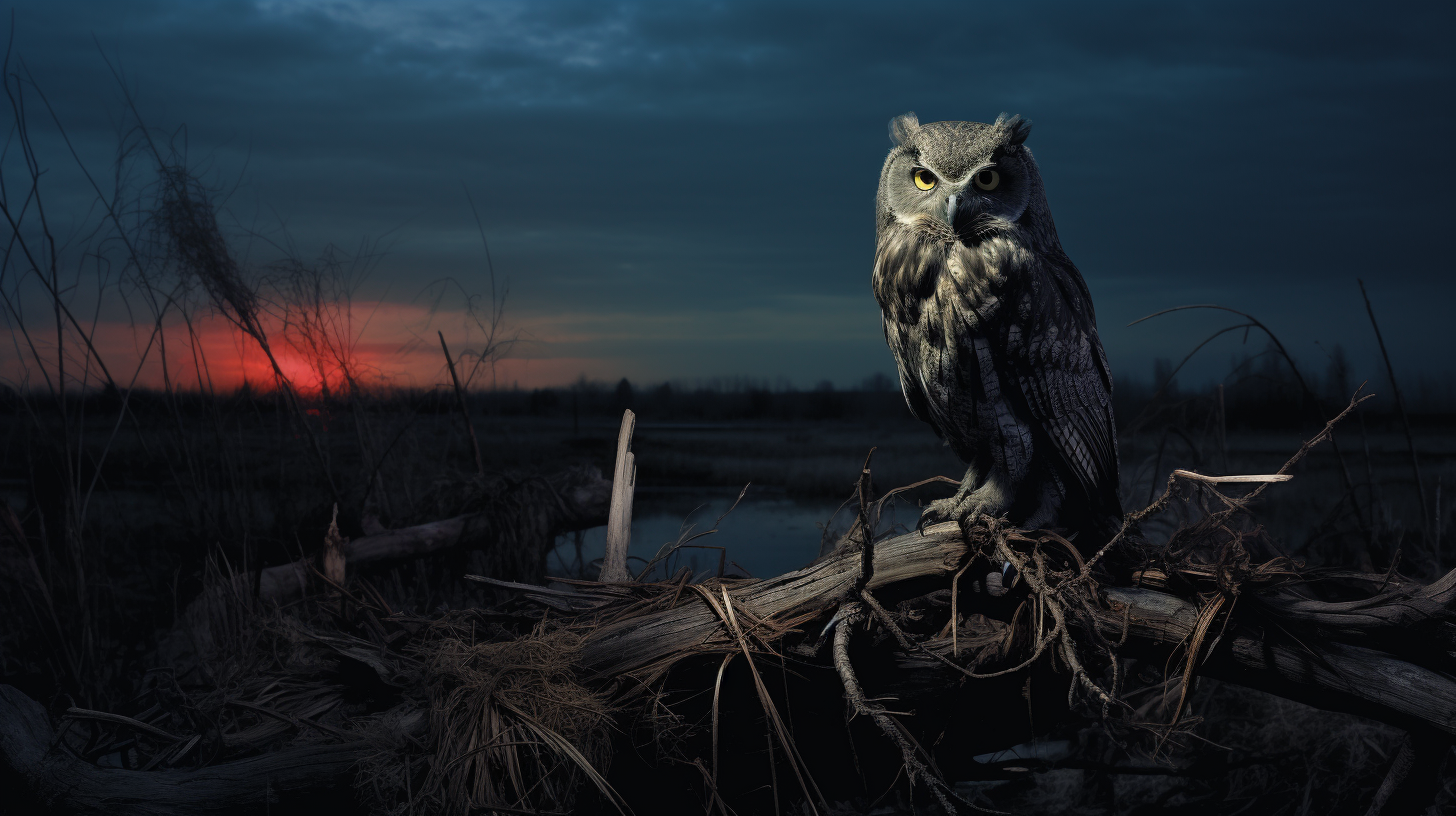In a world where the dusk has become a ghost, a mere memory, the survivors of our planet’s catastrophic climate follies have found themselves thrust into an age of eternal twilight. The sky, a tapestry of grays and ominous clouds, betrays no distinction between dawn and dusk. Animals, once guided by the reliable rhythms of day and night, now scuttle and soar under a sun that never seems to set. “Harbingers of Dusk: Wildlife’s Twisted Adaptations to Nightless Days” charts the eerie and bewildering adaptations of wildlife to a life without darkness, in a cautionary tableau of nature’s resilience and distress.
The canvas of our new world is bleak: the ash-choked skies born from countless forest fires and relentless industrial emissions have eclipsed the once predictable cycles of light so intrinsic to life’s choreography.
In whispers and rustles, amid this ceaseless gloaming, creatures have mutated behaviors and evolved in forms so outlandish, the line between science fiction and stark reality blurs. Melancholy moths, engineered by necessity, now flutter toward artificial moons placed by humans in a vain attempt to mimic lunar cycles. Nocturnal hunters like owls have developed a near-transitional sight, neither fully suited for daylight nor total darkness, giving them a spectral presence in the dismal half-light.
Biologists are both aghast and amazed at the ingenuity of species forging existence in this perpetual penumbra. Frogs croak dissonantly under a sun masquerading as a moon; their mating calls once timed to the fall of night now scatter across all hours in broken harmony. Trees, in aphotic revolt, sprout leaves of such luminous green under a dim sky, they seem lit from within.
Amidst this disquieting transformation, stark behaviors emerge. Bats, synonymous with the night since time immemorial, display chilling alterity. Throngs now cling to the undersides of bridges and in the bowels of abandoned buildings, cloistering themselves against the psychological maelstrom of a sun that never dips below the horizon. Their echolocation, honed for darkness, is ill-fit for the constant dim, leading to a haunting stillness in regions where the chitter of bats would be a defining trait of the waning day.
The implications for the rest of the food web are profound and unsettling. When nocturnal becomes diurnal, and crepuscular loses all meaning, ecosystems fray at the edges. Insects, once timed to emerge with the cover of night, now find themselves the perpetual prey of birds and mammals whose hunting instincts are thrown into turmoil by the lack of night.
Moving beyond the animal kingdom, we glimpse the fantastically distressing panorama of flora twisted by the need for UV light and circadian rhythms. Pollination becomes strange theater as plants secrete scents and pigments at odds with the temporal cues that insects and wind would heed.
In the bleak tableau of our enduring twilight, we see both an extinction of the familiar and an emergence of the perverse. Some may herald these Harbingers of Dusk as icons of adaptability, but one might see also the specters of loss, the silent testimony of nature’s untenable gambit against human-induced purgatory.
Our relay with the night has been broken, and in that fracture, the stories of our planet writhe and contort. Creatures great and small, flora and fauna, perform a macabre dance in the shadows of forgotten nights—adapt, or perish in the gloom of humanity’s darkest epoch.
And as the adaptations echo through the distorted web of life, the intrinsic question reverberates louder than ever: What have we wrought upon the once rhythmic pulse of the Earth? In a landscape where day bleeds into night and morning never breaks, these denizens of twilight take their first, desperate breaths in the new world order, a symphony of life haunted by the alpenglow of an unending sunset.
